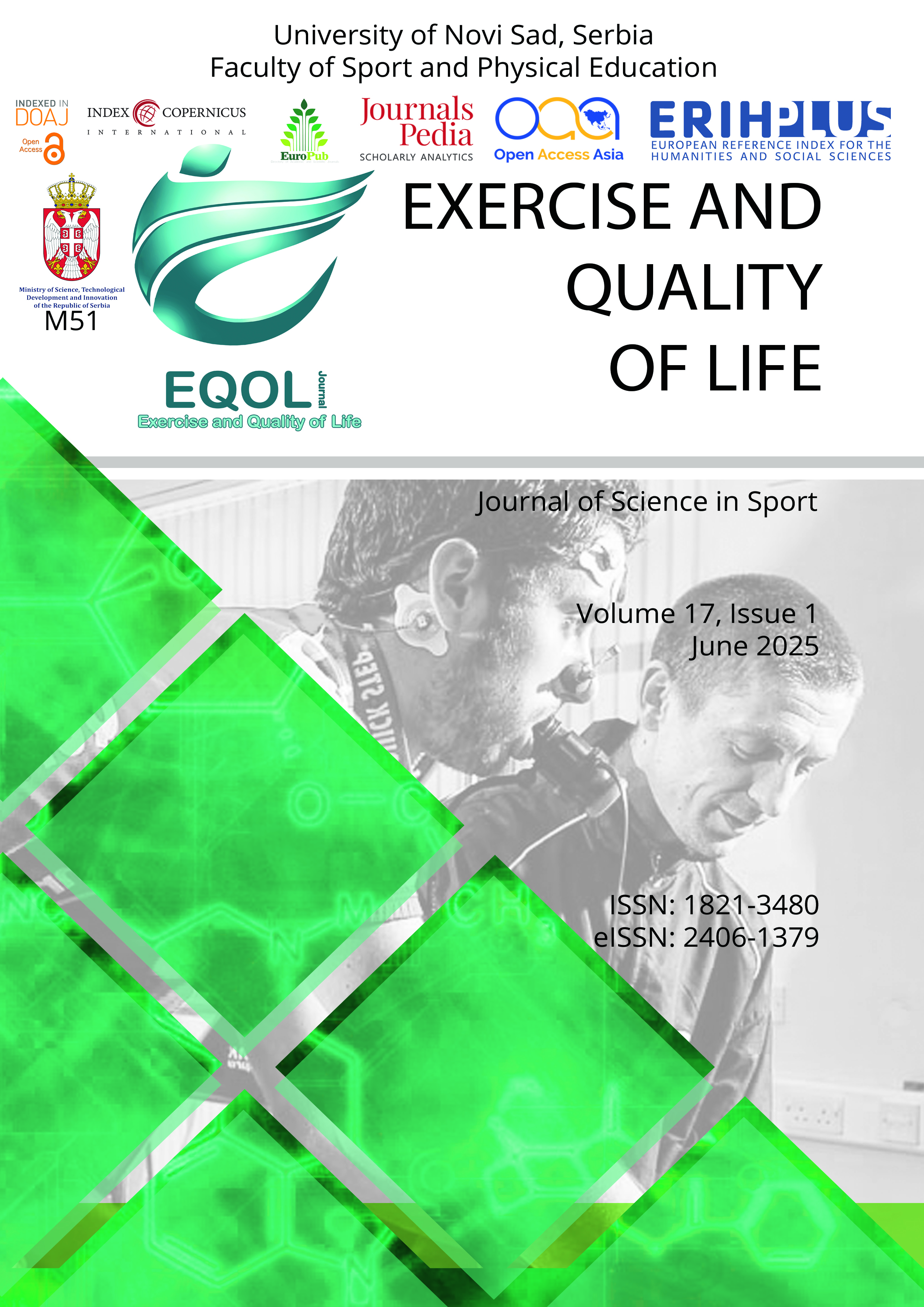Current issue

Volume 17, Issue 1, 2025
Online ISSN: 2406-1379
ISSN: 1821-3480
Volume 17 , Issue 1, (2025)
Published: 15.06.2025.
Open Access
All issues
Contents
01.06.2013.
Original scientific paper
EFFECT OF MAXIMUM VOLUNTARY ISOMETRIC CONTRACTION OF ANTAGONIST MUSCLES IN MAX TORQUE AND RATE OF TORQUE DEVELOPMENT OF AGONIST MUSCLES IN TRAINED AND UNTRAINED WOMEN
The purpose of this study was to compare the effect of antagonist maximum voluntary
isometric contraction on the torque and the rate of torque development of the agonist muscles in
ankle joint in trained and untrained women at 0° angle joint. Twelve untrained and twelve trained
women handball player participated in the study. An isokinetic dynamometer CYBEX Norm was
used for the evaluation of torque. Initially the Maximal Voluntary Isometric Contraction (MVIC)
both for plantar(PF) and dorsi flexors(DF) was evaluated. Afterwards the subjects performed 3
maximal isometric contractions of plantar flexor for 1 second, with 1 minute break between trials.
After 10 minutes complete rest, 3 consecutive maximal dorsiflexion contractions and immediately
after that three maximal PF contraction were performed for the evaluation of the reversal effect
DF on PF. The following parameters were evaluated before and after DF contraction:Plantar
flexion MVIC, Maximal Rate of Torque Development (MRTD), time of MRTD and the RTD
for the period 0–30, 0–50, 0–100 and 0–200 ms after the torque onset. The statistical analysis
showed that the reversal effect was presented only for the trained group for the MRTD and RTD
0–30. These results demonstrated that the existence of the reversal effect of the antagonists is not
appeared always in untrained groups and especially for the joint angle it is affected by the training
background only for selective parameters of muscle contraction.
Despoina Tserepi, Anastasia Papavasileioy, Chrystala Panteli, Xenofontos Anthi, Eleni Bassa, Christos Kotzamanidis























